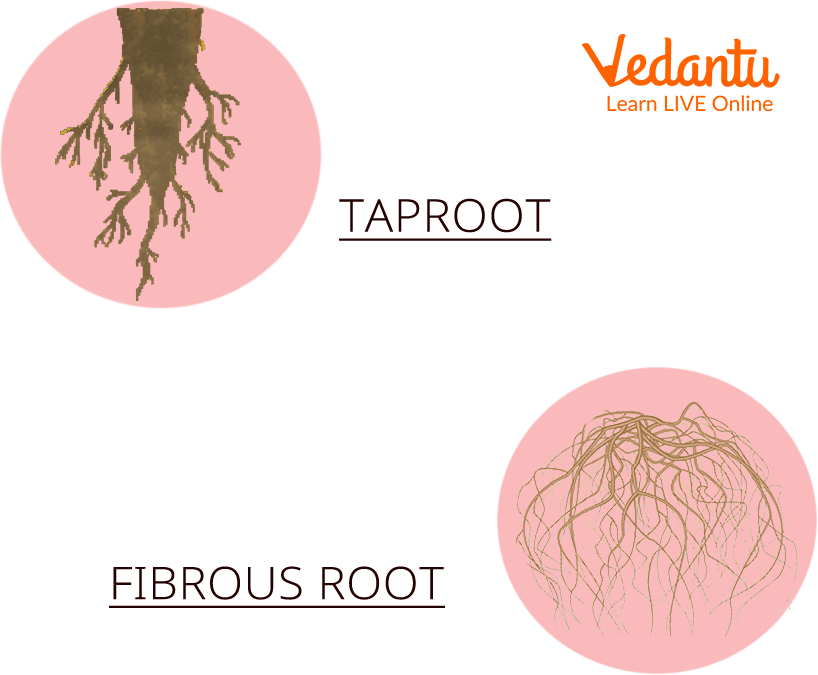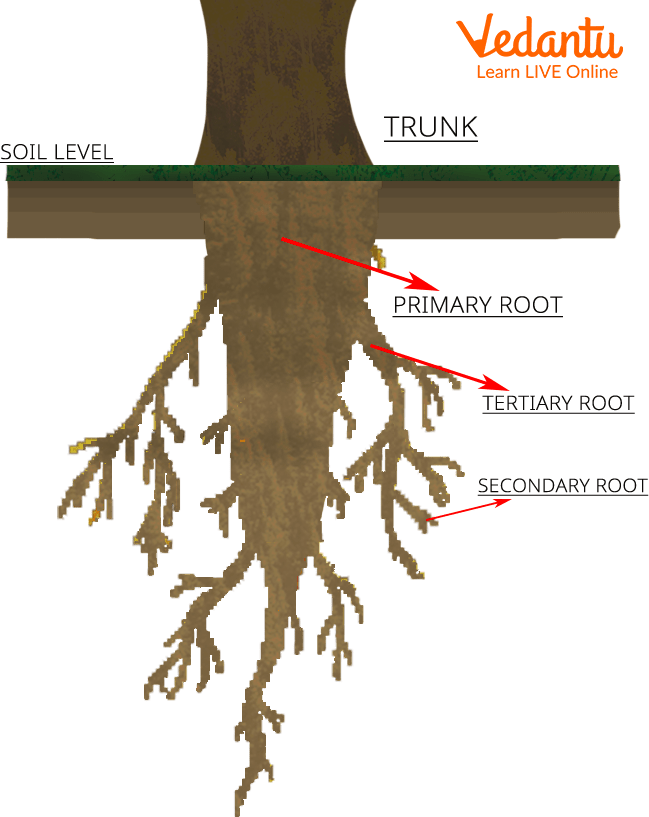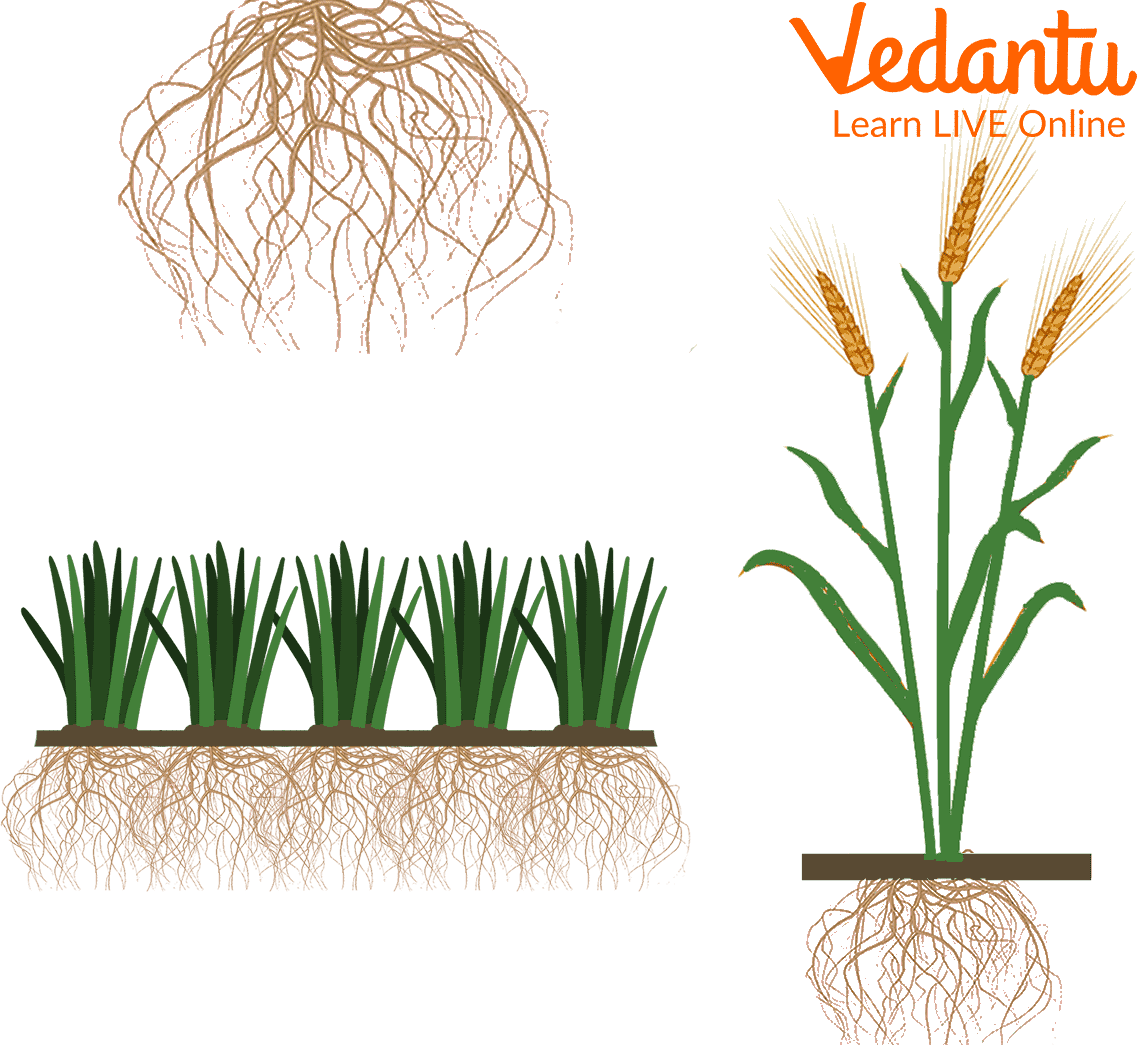




Introduction to the Tap Root and Fibrous Root
A root is a part of a plant that is generally covered up underground. Roots have a few purposes. They hold the plant in the ground and keep it upstanding. The intake of food and water from the soil. They additionally store food for the plant.
A couple of plants can develop roots over the ground. Corn, for example, may develop roots out of its lower stem called aerial roots, they help to set up the plant.
There are mainly two kinds of roots: Taproots and fibrous roots.

Taproot and Fibrous Root
A taproot is a single branch, long thick, and pointed towards the ground whereas a fibrous root is scattered inside the ground with many thin branches.
Let’s see them in detail.
What are Taproot and Fibrous Roots?
Taproot
It is the fundamental root of a primary root system, which grows vertically downwards. Most plants like dandelions, reddish, and grass, produce taproots, and some, consumable roots of carrots and beets, are particular for food storage.
Upon germination, the first structure to rise out of most seeds is the root from the undeveloped radicle. This primary root is a taproot. In plants in which the taproot persists, smaller sidelong roots (secondary roots) commonly emerge from the taproot and may in turn create significantly smaller parallel roots (tertiary roots).
This effectively expands the surface area for water and mineral absorption. In different plants, the underlying taproot is immediately changed into a fibrous, or diffuse, system, in which the initial secondary roots soon equal or exceed the primary root in size and there is no well-defined single taproot. Examples of taproot are beetroot, carrot, onion, reddish, and many more.

Taproot
Characteristics of Taproot
It is the primary root that emerges from the radicle of the seeds.
The taproot gives rise to secondary parallel roots which further structure tertiary horizontal roots.
It is straight and thick in shape and normally tightens at the base.
Fibrous Root
A fibrous root is the complete opposite of a taproot system. It is normally formed by thin, moderately branching roots developing from the stem. A fibrous root system is common in monocotyledonous plants and greeneries. The fibrous root system looks like a mat made from roots when the tree has reached complete development.
Most trees begin life with a taproot, but after following one to a few years change to a wide-spreading fibrous root system with fundamentally even surface roots and a few upward, deep anchoring roots.
A typical mature tree 30-50 m tall has a root system that broadens horizontally in all directions as far as the tree is tall or more, but well more than 95% of the roots are in the top 50 cm depth of soil. Fibrous roots genuinely grow near the outer layer of the ground. Leaves with parallel venation have fibrous roots. Examples of fibrous root systems include coconut palm, banana, wheat, rice, and grasses.

Fibrous Root
Characteristics of Fibrous Root
Fibrous roots genuinely grow near the outer layer of the ground.
Leaves with parallel venation have fibrous roots.
Fibrous roots help in battling soil erosion as it is secured to the top layer of soil.
The thin roots have a similar diameter.

Fibrous Root
Difference Between Tap Root and Fibrous Root
Summary
The following points summarise the contents of this chapter:
Taproot penetrates deep into the soil, while a fibrous root is shallow and doesn't penetrate as deeply.
A taproot is the differentiated essential root of the plant, while the fibrous root isn't the differentiated primary root of the plant.
The fibrous root generates from the stem; this isn't the case for the taproot.
A taproot can sometimes act as a storage organ for food, while fibrous roots can't store food.
FAQs on Tap Root and Fibrous Root
1. What is similar between taproot and fibrous root?
Both tap root and fibrous root systems have thin branches like structures called root hair which increase the surface area of absorption of water and nutrients from the soil. The two sorts of root systems anchor the plant to the soil. The two systems are examples of genuine roots which develop from the radicle of the plant embryo. Plants like carrots and radish exhibit a tap root system, while grass and coconut trees have fibrous root systems. More examples of taproot are ginger, garlic, potatoes, parsnip, turnip, etc.
2. What are the advantages of Fibrous roots?
One of the advantages of a fibrous root system growth is that it tends to be very valuable in erosion control because the roots help to hold soil set up. The roots can likewise trap moisture for the plant, and their boundless guarantees that the plant gets a lot of nutrients and water.
3. What are the advantages of Taproots roots?
The advantages of taproots roots are: Taproots anchor plants deeply, assisting with keeping the wind from blowing them over and stabilising plants that grow in areas of moving soils like sea shores or sand hills.









